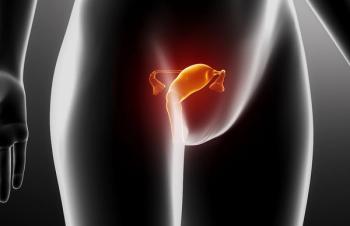
Oncology NEWS International
- Oncology NEWS International Vol 11 No 11
- Volume 11
- Issue 11
Large Trial Adds to Support for Annual Mammography
NEW ORLEANS-Fox Chase Cancer Center investigators presented further support for yearly mammograms in women age 40 and older at the 44th Annual Meeting of the American Society for Therapeutic Radiology and Oncology (ASTRO abstract plenary 2).
NEW ORLEANSFox Chase Cancer Center investigators presented further support for yearly mammograms in women age 40 and older at the 44th Annual Meeting of the American Society for Therapeutic Radiology and Oncology (ASTRO abstract plenary 2).
In this study involving 1,591 women, those who underwent screening mammography at least annually were more often diagnosed with noninvasive stage 0 breast cancer than women with less frequent or no prior screening. Women with any history of mammography screening prior to diagnosis also presented with earlier stage invasive disease and smaller tumor size, which led to a greater likelihood for breast-conserving surgery, reported lead author Gary M. Freedman, MD, of Fox Chase Cancer Center.
Additionally, in the subset of women aged 40 to 49, for whom screening has been more controversial, screening was significantly associated with lower tumor stage and smaller tumor size, Dr. Freedman said.
Women age 40 and older were included if they had newly diagnosed breast cancer and were able to supply information about the number and frequency of their mammograms prior to their breast cancer diagnosis.
Study participants were classified into three groups: Group 1 (unscreened) had never had a mammogram prior to diagnosis; group 2 (partially screened) had mammograms on average less than once a year; and group 3 (highly screened) had mammograms on average yearly or more often. These three groups were compared for method of detection, T stage at diagnosis, tumor size, and eligibility for breast conservation. For each patient, a mammogram frequency index was assigned by a formula: frequency = age minus 40/number of prior mammograms.
The method of cancer detection was by mammogram alone in 33% of group 1 patients, 49% of group 2 patients, and 59% of group 3 patients. Ductal carcinoma in situ (DCIS) was diagnosed in 15% of group 1 subjects, compared with 21% in group 2 and 26% in group 3 (P < .0001), Dr. Freedman reported.
Of the unscreened patients, 32% had stage T1 disease, compared with 53% of patients in both screening groups. In addition, the tumor size was 1 cm or less in 8% of unscreened women, compared with 22% of screened women (P < .0001).
Nodal stage N0 was found in 83% of unscreened women, and 93% to 94% of screened subjects (P < .0001). Stage N1 was noted in 15%, 7%, and 5%, for groups 1, 2, and 3, respectively, and N2 was found in 2% of unscreened women and in less than 1% of screened subjects.
There was a statistically significant difference in favor of more frequent (group 3) vs less frequent (group 2) screening mammography with regard to method of detection, tumor stage, and tumor size.
Subset analysis showed that women aged 40 to 49, for whom screening has been more controversial, also benefited from screening. Similar to the overall analysis, there was a statistically significant difference in the distribution of tumor stage among the groups, with a generalized downstaging to the in situ or T1 form of disease, and less frequent occurrence of T2-T4 stages, as well as a decrease in tumor size.
There was also a correlation between mammographic screening and eligibility for breast-conserving surgery. Breast conservation was offered to 41% of group 1 patients and 61% of group 2 and group 3 patients. In the screened groups, only 29% of patients were advised to have mastectomy. The differences in treatment recommendations were also statistically significant (P < .0001).
"Mammography screening was associated with significant benefits. There was a higher frequency of noninvasive cancers, there were earlier tumor stages of invasive cancer, patients presented with smaller tumor size, and they were more likely to be recommended for breast-conserving surgery with screening," Dr. Freedman concluded. "Yearly mammogram frequency was associated with lower tumor stage and smaller tumor size, compared with less frequent screening. These results were also seen in women aged 40 to 49 years."
Why Does Controversy Still Rage?
The discussant for the paper, Allen Lichter, MD, professor of radiation oncology and dean of the University of Michigan Medical School, remarked upon the "huge controversy about mammography" that still rages, in spite of eight randomized trials involving nearly 500,000 women, all supporting the hypothesis that regular screening reduces mortality.
"In the last year, you can find [by Internet search] 95 articles on mammography, including those questioning whether mammography is useful at all. Why did we move from arguing about whether to start screening at age 40 to arguing about screening at all?" he asked.
Breast cancer is a progressive disease, and if mammography detects smaller tumors and increases the chance of breast conservation, as shown by the Fox Chase study, it should lead to increases in survival, Dr. Lichter said.
"This study joins numerous other studies showing that mammography detects smaller tumors than are detected clinically, and highlights the treatment consequences of this," he said.
Articles in this issue
about 23 years ago
Zoledronic Acid Reduces SREs in Solid Tumorsabout 23 years ago
Study Supports Wider Use of SLN Biopsy in Breast Cancerabout 23 years ago
Minorities Less Likely Than Whites to Receive Good Pain Careabout 23 years ago
Polyglutamate-Paclitaxel Controls Recurrent Ovarian Cancerabout 23 years ago
9cRA Shown to Reverse Premaliagnant Changes in Ex-Smokersabout 23 years ago
FDA Names New ODAC Chairabout 23 years ago
Neoadjuvant Weekly Paclitaxel Effective in Advanced Breast Cancerabout 23 years ago
Docetaxel Plus Gemcitabine Promising in Advanced Pancreatic Cancerabout 23 years ago
Polysaccharides Unique Targets for Immunotherapyabout 23 years ago
Genetic Fingerprinting Shows Distinct Sarcoma SubsetsNewsletter
Stay up to date on recent advances in the multidisciplinary approach to cancer.





















































































